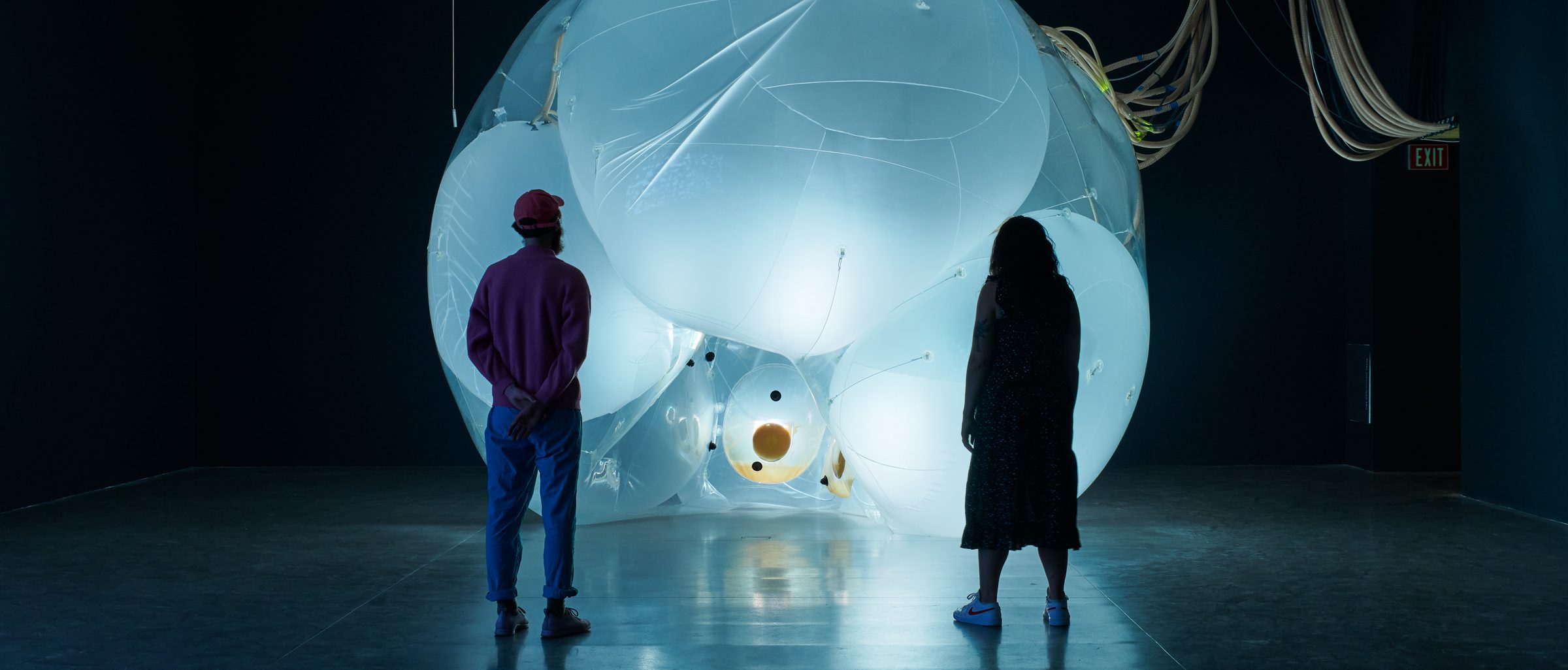Architecture & Design

The globally recognized Walker Design Studio cultivates and showcases the best in contemporary architecture and design.
Architecture and design are the places where art and industry meet everyday life. From books to exhibitions, garden to gallery, online to IRL, the Walker’s Design Studio creates all the designed communications for the Walker. As a programming department, the studio hosts the annual Insights Design Lecture Series, mounts ambitious design exhibitions, and curates Idea House 3, a retail space dedicated to contemporary design. Meanwhile, its globally recognized publishing program and yearlong Mildred Friedman Design Fellowship extend design’s reach and foster emerging design talent.
The studio builds on a legacy reaching back almost a century. The Walker’s Idea House model homes (1941, 1947) and Design Quarterly journal (1954–1996) were among the first initiatives to showcase postwar design in the US. Today, the studio remains at the forefront of design discourse, through exhibitions like Graphic Design: Now in Production (2012), Hippie Modernism (2016), and Designs for Different Futures (2020). As new technologies reshape language, images, and the ways we inhabit and navigate the world, the Walker Design Studio remains committed to the notion of the “public” in “publication.”
Design has been a major part of Walker Art Center programming since its founding in 1940, when Daniel S. Defenbacher, a trained architect and designer, became the first director. He began his tenure with a series of exhibitions on Housing: American Houses Today, Accessories for the Home, and City Planning, 1941. These exhibitions were followed closely by the Idea Houses, two fully functional homes open to the public featuring modern conveniences such as a dishwasher, and contemporary furnishings by leading designers like Charles and Ray Eames. The Idea House program was meant to encourage the homeowner to work with an architect to build an affordable home. Completing the Everyday Art and later Good Design movement, the Walker began publishing the Design Quarterly (originally Everyday Art Quarterly) in 1946. The journal was an industry-leading design publication well into the 1990s.
As design trends shifted, so did the programming focus. In the 1960s and 1970s, the design team presented exhibitions on topics such urban renewal, education, and the environment: these included Toward a New City,1965, based on a study of Minneapolis; Making the City Observable,1971; New Learning Spaces and Places,1974; and The River: Images of the Mississippi, 1976. Exhibitions featured lectures, workshops, and frequently complete issues of Design Quarterly. Occasionally designers presented events onsite, such as the conceptual team Haus/Rucker Co, who installed Food City I(1971)—literally, the city made from food—in front of the Walker and asked visitors to take a bite out of urban blight.
The 1980s and 1990s focused on graphic design and architectural trends with shows such as De Stijl: 1917–1931 Visions of Utopia, 1982; Graphic Design in America, 1989; and the series Architecture Tomorrow, 1988–1991, with Frank Israel, Morphosis, Todd Williams/Billie Tsien, Stanley Saitowitz, Diller+Scofidio, and Steven Holl. Further focus on graphic design began in the 1980s with the start of Insights, a design lecture series that continues today.
In the last 25 years, design shows have continued to focus on current housing issues, due to environment, economy, and migration, including Some Assembly Required: Contemporary Prefabricated Houses,2005; Design for the Other 90%,2008; and Designs for Different Futures,2020, as well as a concentration on graphic design, including Graphic Design: Now in Production, 2011.
While the design exhibition and programming continue, the department is also responsible for the graphics, guides, exhibition catalogues, print and digital materials for all Walker exhibitions and programming. The Walker has been fortunate to have a Design department in place since the very beginning.
What is Design?
Design is the operating system of human existence. Along with other applied arts like architecture, design is where art meets life, then dares to ask, “What if?” It’s the bridge between imagination and reality, shaping how we see, learn, think, connect, and navigate the world. From a typeface to a transit map, a protest poster to a coffee table book, design is everywhere.
Read more


Insights design lecture series
Since 1986, the Walker’s Insights Design Lecture Series showcases leading design thinkers and professionals who are reshaping the field.
Learn more and watch the lectures

Walker publications
For over 75 years, the Walker Art Center has explored the cutting edge of publishing across form and content. This continues today through our print and digital publishing endeavors.
Explore
